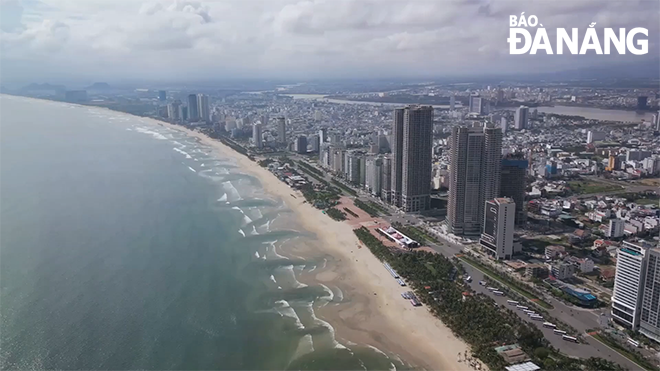City still faces flood risk in upcoming rainy season
Currently, there are a total of 24 flood points in Da Nang.
 |
| Flooding on a section of Cach Mang Thang Tam Street |
Amongst, the intersection of Ton Duc Thang, Yen The and Bac Son streets is one of the city’s most concerned hotspots because the upgrade of rainwater drainage systems there has yet to be carried out.
Mr Trinh Van Long, a resident is living on Bac Son Street, said that the city authorities have given the green light to the upgrade of five 2.5mx2m sluice gates on Ton Duc Thang from 4 June - 30 October.
He also highlighted the importance of the upgrade work in increasing the drainage capacity from the sluice gates to the Trung Nghia Lake and Phu Loc Canal. However, the work has yet to been implemented.
Mr Mai Ma, Director of the city’s Water Drainage and Wastewater Treatment Company, noted that the intersection will be inundated seriously if it receives 100mm of rain in two hours.
He, therefore, has asked the Management Board for the local Priority Infrastructure Investment Projects to implement the upgrade work as soon as possible.
Director Ma also raised his concern over the Da Co Bridge flood point because a great deal of water ferns is often trapped at sluice gates of two-piece precast concrete box culverts there.
Meanwhile, sections of Phan Van Dinh and Nguyen Luong Bang streets have been deeply flooded during recent rainy seasons because the Bau Mac Lake has been backfilled, and the existing rainwater drainage systems are too small to drain surface water away from the roadways.
In attempting to minimise the risk of flooding during this year’s rainy season, the company has so far this year dredged over 3,000m3 of mud and sand in sewer pipelines along the streets of Duong Tri Thach, Ngo Thi Si, Ha Bong, Ho Xuan Huong, Hoang Ke Viem, Duong Dinh Nghe, An Thuong 1, Nguyen Van Linh and Trieu Nu Vuong.
The dredging of around 3,500m3 of mud and sand in sewer pipelines along other streets is expected to be completed before this year’s rainy season.
The focus has been on cleaning water reservoirs, drainage canals, sluice gates, and water pumps to avoid flooding.
Special attention has also been paid to upgrading the remaining flood points, and developing numerous plans to solve the flooding problems.




